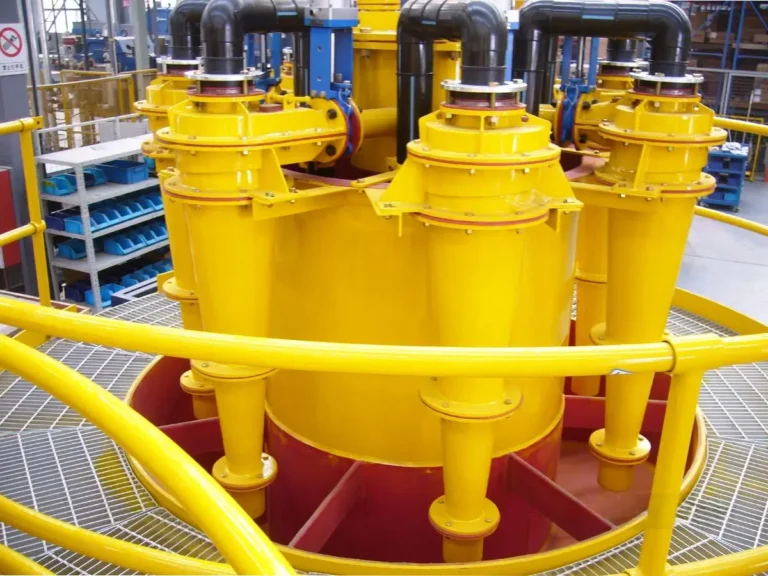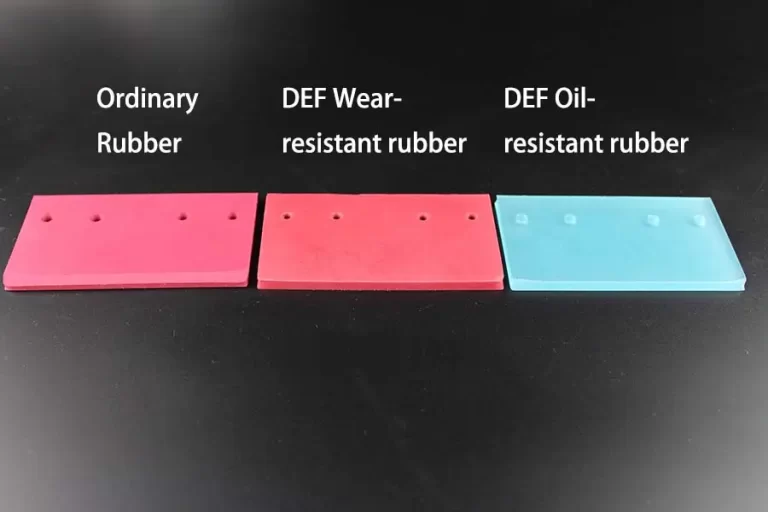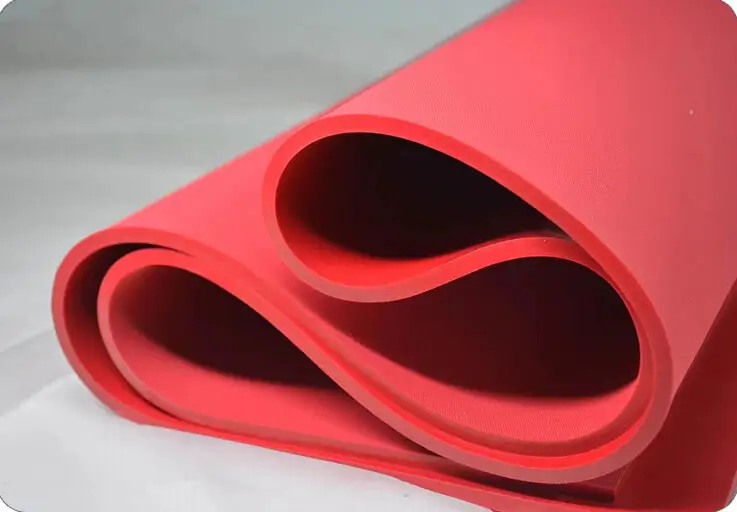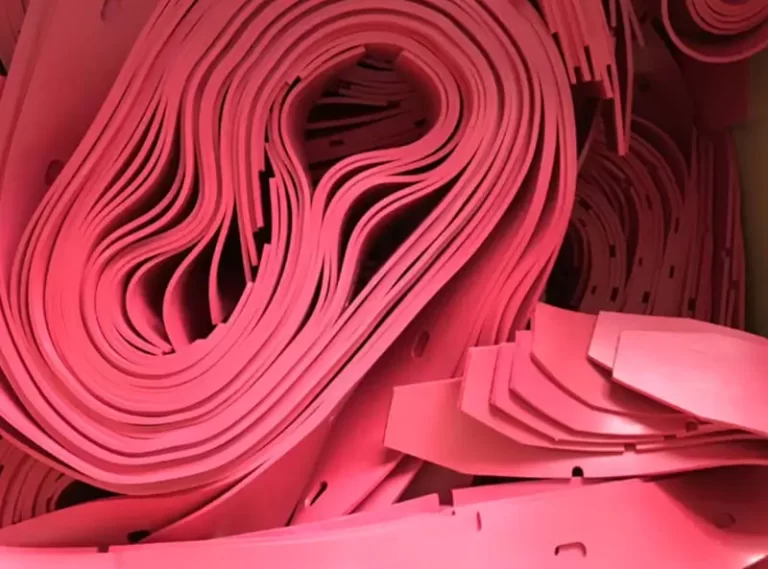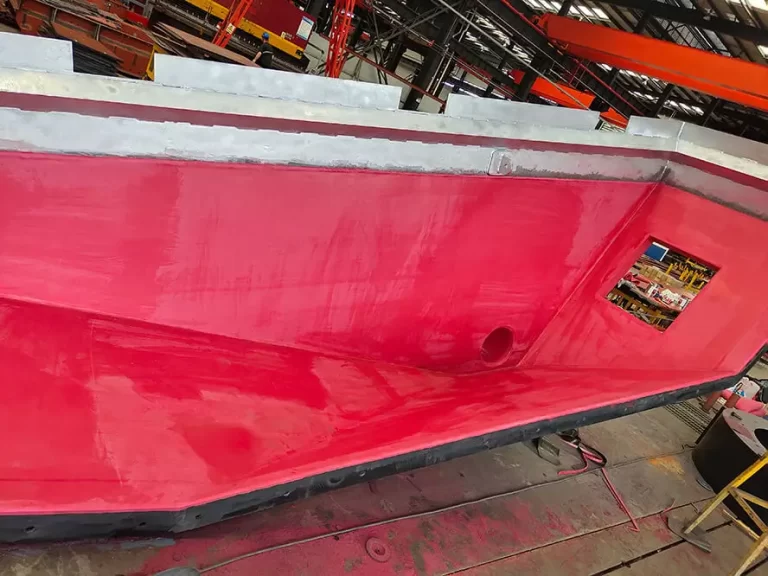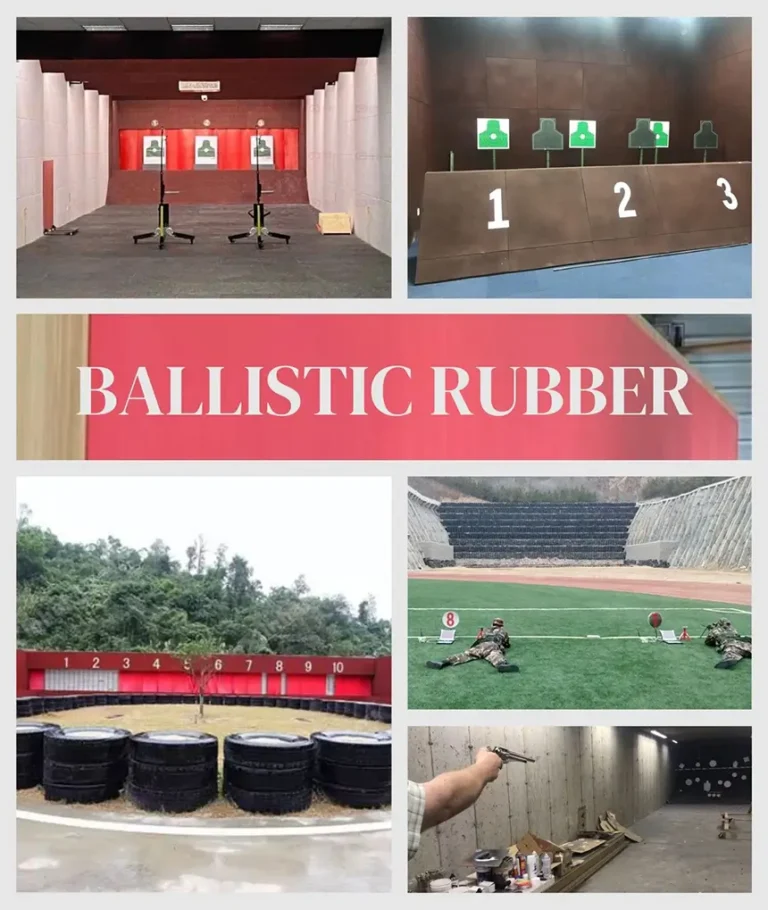Hydrocyclone Sizing and Selection Guide
Learn the key design parameters, dimensions, and operational tips that influence hydrocyclone efficiency and selection. Find out how to choose the best hydrocyclone for your needs.
- What is a Hydrocyclone? (Definition & Purpose)
- Key Design Factors Affecting Hydrocyclone Performance
- How to Size a Hydrocyclone (Basic Calculation Steps)
- Practical Considerations for Hydrocyclone Selection
- DEF Rubber Solutions: Hydrocyclone Separators & Custom Parts
Hydrocyclones (sometimes called hydrocyclone separators) are vital equipment for separating solids from liquids in mining, aggregates, and other industrial processes. Choosing the right hydrocyclone size and configuration can make a big difference in your operation’s efficiency, cut point, and overall performance. In this guide, we explain the sizing and selection of hydrocyclones in simple terms – covering the key design parameters, hydrocyclone calculations for determining the correct dimensions, and what to consider when comparing different cyclone models. Whether you’re evaluating a Weir Cavex hydrocyclone, an FLSmidth hydrocyclone (KREBS design), or any other brand, understanding these basics will help you select the best solution.
At DEF Rubber, we have extensive experience with hydrocyclone technology. We not only provide complete hydrocyclone units and custom hydrocyclone parts, but also help customers optimize their cyclone performance through proper sizing and high-quality wear-resistant materials.
What is a Hydrocyclone? (Definition & Purpose)
A hydrocyclone is a cone-shaped device that uses centrifugal force to separate particles in a fluid mixture based on their size and density. This hydrocyclone definition highlights the device’s purpose: to split a feed stream into two outputs – a coarser fraction and a finer fraction – by sorting particles according to weight and size. In operation, the hydrocyclone’s separation process classifies an incoming slurry into two streams: an “underflow” of coarser/heavier particles and an “overflow” of finer/lighter particles.
This separation mechanism allows for efficient classification of particles (sending fines to overflow and coarse to underflow). As a result, hydrocyclone classification is widely employed in mineral processing circuits (e.g. to classify ground ore in comminution circuits), in aggregate washing (to remove silt and clay), and even in wastewater treatment (to remove suspended solids from water).
How it works: Slurry is pumped into the cyclone’s cylindrical upper section at high pressure through a tangential inlet, creating a spinning vortex inside. The centrifugal forces push heavier or larger particles outward to the cyclone wall and then downward into the cone section, ultimately exiting through the bottom underflow (via the apex, or spigot). Meanwhile, lighter or fine particles migrate to the center of the vortex and are carried upward, exiting out the top overflow pipe (vortex finder). Importantly, a hydrocyclone has no moving parts – it’s a simple, robust design that relies entirely on fluid dynamics for separation.
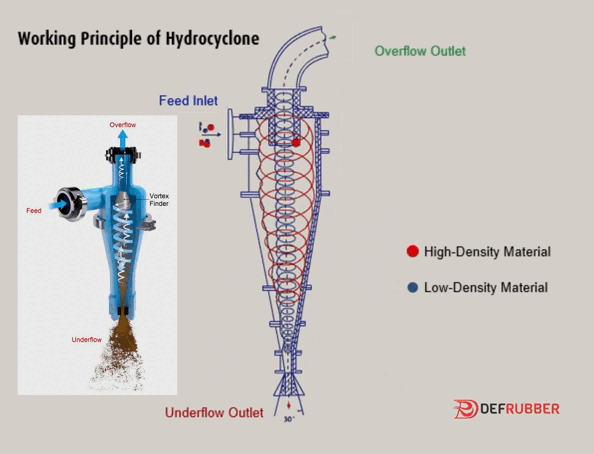
(Interested in more detail on the operating principle? See our article on how a hydrocyclone works for an in-depth explanation of hydrocyclone operation.)
Key Design Factors Affecting Hydrocyclone Performance
Several design parameters and hydrocyclone dimensions determine how a cyclone will perform and what cut size it can achieve (i.e. its efficiency and separation size). When sizing or comparing cyclones, pay attention to these key factors:
- Cyclone Diameter: The diameter of the hydrocyclone (typically measured at the cylindrical section) is the primary sizing parameter. As a rule of thumb, larger diameter cyclones produce a coarser separation (higher d₅₀ cut size) and can handle higher flow rates. Smaller diameters yield finer separation but at lower throughput. Hydrocyclones come in a wide range of sizes – from small 50 mm (2 inch) units for very fine separations, up to 1000 mm (40 inch) units for high-volume coarse separation. Selecting the right diameter is crucial: for example, a 250 mm (~10 inch) cyclone might achieve a cut point around 20–50 microns, whereas a 50 mm cyclone can cut below 10 microns under ideal conditions.
- Cone Angle and Cyclone Length: The cone angle (angle of the conical section) and the length of the cyclone affect the time particles spend inside (residence time) and the internal flow characteristics. A long, slender cyclone with a smaller cone angle (e.g. 20°) gives particles more time to separate and is often used for fine classification. A larger cone angle (e.g. 40°) makes a shorter cyclone; these are used for coarser separation or higher capacity needs. In general, a longer cyclone (or adding an extended cylindrical section) can improve separation sharpness and efficiency for fine particles, but may reduce capacity slightly. Standard designs often have a cylindrical length roughly equal to the cyclone diameter, and cone angles in the range of ~20–45° depending on the application.
- Vortex Finder (Overflow Outlet): The vortex finder is the tube that extends into the cyclone from the top and channels the overflow (fine product) out. Its diameter and insertion depth influence the flow split and separation. Typically, the vortex finder diameter is about 0.2–0.4 times the cyclone diameter. A larger overflow pipe allows more flow out the top and usually raises the cut size (meaning more fines may report to underflow), while a smaller one produces finer overflow but could limit throughput. The bottom edge of the vortex finder must be at an optimal depth inside the cyclone: if it’s too short/shallow, excess short-circuit flow (unseparated fluid) goes straight to overflow, reducing efficiency. If it extends too deep, it can pull some coarser material into the overflow. Most designs set the vortex finder insertion depth to around 0.5–0.8 of the cylindrical section height for balanced performance.
- Apex (Spigot) Diameter: The apex or spigot is the small opening at the cyclone’s underflow exit. Its size controls the underflow discharge and the consistency of the underflow stream. A larger apex yields a higher underflow volume (and more water reporting to underflow), which results in a wetter underflow and a coarser cut point. A smaller apex produces a drier underflow (less water, so more fines are forced out the overflow – giving a sharper separation). However, if the apex is too small it can cause the underflow to “rope” (come out as a thick, rope-like stream) or even clog, which severely disrupts separation. In operation, you want the underflow to come out as a steady spray or umbrella-shaped pattern. As a guideline, apex diameter is often about 0.1–0.2 times the cyclone diameter, but it must be chosen in combination with the vortex finder to achieve the desired underflow concentration and avoid roping.
- Feed Inlet Size and Design: The inlet shape and size (feed port) affect how the slurry enters the cyclone and initiates the spiral flow. Many cyclones use a simple tangential inlet; some advanced designs like the Cavex® hydrocyclone use a volute or spiral inlet to reduce turbulence. Inlet cross-sectional area is typically around 15–25% of the cyclone’s cross-sectional area. A larger inlet can handle more flow (increasing capacity) but may slightly lower separation efficiency due to increased turbulence. The feed inlet design and orientation also impact wear – the inlet and the area right below it see the highest erosion. This is why proper wear lining at the inlet (e.g. rubber lining) is important to prolong life.
- Operating Pressure: Hydrocyclones require a certain feed pressure (supplied by a pump) to work effectively. The feed pressure creates the centrifugal force needed for separation. Normal operating pressure for many cyclones is in the range of 50–150 kPa (7–22 psi), though this can vary with application. Higher pressure generally increases the centrifugal force, which can push the cut point finer (separating smaller particles) and increase capacity up to a point – but excessive pressure causes more wear and can induce turbulence that reduces efficiency. Each cyclone size has an optimal pressure range; when sizing a cyclone system, ensure your pumps can deliver a consistent pressure in that range for the chosen cyclone diameter.
- Feed Solids Concentration: The percentage of solids (by volume) in the feed slurry influences cyclone performance. A moderate solids concentration (e.g. 15–30% by volume in mineral slurries) is often ideal. If the feed is too dilute, separation efficiency drops because there’s little “crowding” effect and fine particles may follow the water to the underflow. If the feed is too concentrated or has too many ultra-fines, the slurry viscosity increases; this hinders particle movement and typically results in a coarser effective cut (fines end up in the underflow) and can lead to roping. When selecting a cyclone, consider the expected feed density and particle size distribution. Sometimes a hydrocyclone cluster (multiple cyclones in parallel) is used to handle high-volume or high-solids feeds more effectively than a single large unit. Clusters allow each cyclone to operate within an optimal feed rate and can improve overall separation efficiency.
All these factors are interrelated. Manufacturers typically design cyclone internals (vortex finder, apex, etc.) in proportion to the cyclone diameter for balanced performance. Modern hydrocyclone technology has refined these proportions (for example, special inlet geometries or improved liner materials to enhance wear life), but the core principles remain. Understanding how each parameter affects hydrocyclone performance will guide you in sizing and selecting the right model.

How to Size a Hydrocyclone (Basic Calculation Steps)
Selecting a hydrocyclone involves a few calculations and decisions to ensure the chosen cyclone will meet your separation requirements. Here’s a simplified step-by-step approach to hydrocyclone sizing:
- Define Your Separation Requirements: Start by clarifying what you need the hydrocyclone to achieve. What cut size (d₅₀) do you require – i.e. what particle size should be separated at 50% efficiency? Also consider the required capacity (feed flow rate) and the nature of your slurry (solids density and concentration). For example, you might need to classify material at 25 µm with a feed of 500 cubic meters per hour in a grinding circuit.
- Select an Approximate Cyclone Diameter: Using the target cut size and flow rate, choose a preliminary cyclone size. Smaller diameters yield finer cuts (lower d₅₀): for instance, a 150 mm cyclone might cut around 15–20 µm, while a 500 mm cyclone might cut around 40–60 µm (exact values depend on operating conditions). If a very fine separation is needed (sub-20 micron), you will likely need small cyclones; if only a coarse split (say 100 µm or larger), a bigger cyclone may suffice. Many suppliers provide charts or an online hydrocyclone design calculation tool to estimate d₅₀ for their cyclone sizes at standard conditions. It’s often wise to evaluate a couple of size options at this stage for comparison.
- Determine the Number of Cyclones (if needed): Check the capacity of the chosen cyclone size. Each cyclone diameter has a typical range of feed flow it can handle at the design pressure (for instance, a 250 mm cyclone might handle around 150–250 m³/h of slurry under normal operating pressure). If your required throughput exceeds what one cyclone can process efficiently, plan to use multiple cyclones in parallel as a unit (cluster). It’s common in industrial applications to install a hydrocyclone cluster (also called a cyclone pack or bank) where several cyclones split the flow. For example, instead of one huge cyclone, you might use six medium cyclones to get the desired capacity while achieving a finer cut. Clusters also offer flexibility – you can turn individual cyclones on or off to accommodate fluctuations in flow, and maintenance can be done on one unit while others continue operating.
- Adjust the Apex and Vortex Finder Sizes: After deciding on the cyclone diameter (and number of units), ensure the internal components (the apex/spigot and vortex finder) are configured for your application. Manufacturers will have standard insert sizes for a given cyclone model (sometimes offering “fine,” “medium,” or “coarse” internal kits). If your goal is a drier underflow or sharper cut, you might choose a smaller apex and/or a larger vortex finder to force more fines out the overflow. Conversely, if you need to maximize recovery of fine solids in the underflow, a larger apex might be used. These choices affect the underflow density and separation efficiency, and must be balanced to avoid operational issues (like roping). Often, achieving the ideal performance requires using the vendor’s experience or performing trials – for example, they may recommend a particular apex size based on your feed percent solids and desired underflow density.
- Check Operating Conditions: Finally, verify that you can run the selected hydrocyclone at the proper pressure and feed conditions. Ensure your feed pump can deliver the required pressure at the needed flow rate (including some extra head to account for pipeline losses). Also, consider the variability in your feed material – if there’s a significant amount of ultra-fines or if the ore characteristics vary, you might need to design for a range of conditions or include extra cyclones as backup. In cases of uncertainty, running pilot tests or using simulation models can help confirm that the chosen cyclone setup will achieve the desired hydrocyclone separation efficiency before full-scale implementation.
By following these steps, you can narrow down the cyclone size and configuration needed for your application. For example, suppose testing shows you need a cut around 20 µm at 1000 m³/h of slurry. You might select a 250 mm cyclone, which (at ~100 kPa feed pressure) can achieve ~20–30 µm cut size. One unit of that size handles roughly 150 m³/h, so you’d install a cluster of 7–8 cyclones to cover 1000 m³/h with some capacity margin. You would then select appropriate internal sizes (for a 250 mm cyclone, perhaps an 80 mm vortex finder and 45 mm apex, as an example of a “fine” configuration). This setup would be expected to deliver the separation performance needed.
Keep in mind that sizing calculations provide a starting point. Real-world performance can be affected by factors like wear (as internal surfaces erode over time, the effective dimensions change) and normal variations in feed material. It’s wise to consult with hydrocyclone manufacturers or specialists (like our team at DEF Rubber) who use proven design models and field experience to fine-tune the selection for your specific case.
Practical Considerations for Hydrocyclone Selection
Beyond the basic sizing calculations, consider the following practical factors when choosing a hydrocyclone for your operation:
- Efficiency vs. Capacity Trade-off: There is often more than one way to meet your requirements. For instance, two or three smaller cyclones might achieve a similar result as one large cyclone. Smaller units give finer cuts but you need more of them to handle the flow, whereas a single larger unit is simpler (fewer pipelines and valves) but may not reach as fine a cut. Think about what’s more important for you: maximum separation efficiency (sharper classification) or minimizing the number of units and associated infrastructure. In a milling circuit, using more cyclones can sometimes improve overall circuit efficiency by reducing over-grinding, but it also means more equipment to maintain.
- Space and Footprint: The physical space available in your plant can influence selection. A hydrocyclone cluster with several small cyclones requires a distributor manifold and sufficient room to mount multiple units (often in a radial arrangement), which could take up more space and height. One or two large-diameter cyclones might fit in a tighter area. Be sure to account for maintenance access too – clusters need room for isolating and accessing each cyclone for inspection or replacement.
- Wear and Maintenance: All hydrocyclones experience wear, especially at the feed inlet, inner walls, and apex. The frequency and cost of maintenance are important considerations. Some designs boast longer wear life – for example, the Weir Cavex design reduces turbulence, which can lessen wear in certain areas, and high-quality liners can dramatically extend service life. Ensure that the model you choose has readily available spare parts. Using high-quality wear-resistant liners (like DEF Rubber’s natural rubber lining) can significantly extend the service life of a cyclone and help it maintain its efficiency over time. In fact, upgrading the lining material is a cost-effective way to boost hydrocyclone performance without changing out the entire unit.
- Cost Considerations: The hydrocyclone cost includes both the initial capital cost and the ongoing operating costs. A larger cyclone might cost more upfront than a smaller one, but if you need multiple smaller units, the total cost (multiple housings, piping, valves, etc.) could be higher. Also consider the cost of supporting equipment: multiple cyclones need a distributor, more piping, and more valves/control instruments. On the operating side, pumping energy costs could differ – sometimes smaller cyclones require higher feed pressure (more pump energy) to achieve fine cuts, whereas a larger cyclone might handle the duty at a slightly lower pressure. Balancing these factors can lead to the most economical solution that still meets your performance goals. Don’t forget to factor in wear part costs and replacement frequency as part of the lifecycle cost.
- Flexibility and Future Needs: Process conditions can change over time. Ore characteristics might shift, or throughput might increase with plant expansions. It can be wise to select a cyclone configuration that offers some flexibility. For example, installing one or two extra cyclones in a cluster as stand-by units allows you to accommodate higher flows or to take cyclones offline for maintenance without impacting production. Alternatively, choosing a cyclone that can operate across a range of pressures gives you the ability to adjust cut size later (e.g. you might run at 80 kPa now for a coarser cut, but have the option to increase to 120 kPa in the future for finer separation if needed). Evaluate whether the cyclone selection can handle potential variability, or if it’s narrowly tailored to a specific condition.
- Brand and Design Differences: Different manufacturers offer various hydrocyclone designs, but most operate on the same principles. Some well-known types include FLSmidth’s KREBS® cyclones and Weir’s Cavex® cyclones, as well as designs by Multotec, Metso, etc. The differences lie in specific geometric tweaks and proprietary liner materials: for example, FLSmidth’s gMAX cyclones feature an improved cone section and an apex design that resists wear, while Cavex cyclones use a unique curved inlet and voluminous feed chamber to improve capacity and sharpness. When selecting, it’s useful to compare the performance curves and wear life of each design for your particular application. However, rest assured that the fundamental sizing criteria (diameter, cut size, pressure, etc.) can be met by any major brand – you’re mainly choosing a package of performance, wear life, and support. Consider the reputation of the supplier, the availability of spares, and any technical support offered. In many cases, operational success comes down to maintenance and part replacement, so a design that you can service easily (or obtain custom hydrocyclone parts for) might be the most practical choice.
DEF Rubber Solutions: Hydrocyclone Separators & Custom Parts
Choosing the right hydrocyclone is easier when you have the right partner. DEF Rubber offers a full range of hydrocyclone solutions – from complete hydrocyclone separators to spare parts and expert support – to ensure you get optimal performance at the best value. Here’s how we can help:
- High-Quality Hydrocyclone Equipment: We supply robust hydrocyclone units tailored to your requirements. Our cyclones are lined with DEF’s proprietary ultra-wear-resistant rubber, which dramatically extends their lifespan. (In tests, our specialized natural rubber lining lasts up to 3 times longer than standard liners like Linatex®.) This means less downtime and lower maintenance costs for your operation, as well as sustained hydrocyclone efficiency over time.
- Custom Hydrocyclone Spare Parts: If you already operate cyclones from major brands, we have you covered as well. DEF Rubber manufactures custom hydrocyclone parts compatible with leading models, including replacement liners for Cavex hydrocyclones and FLSmidth (KREBS) cyclones. From feed chamber and volute liners, to durable cone section liners, to long-lasting vortex finders and precision-molded spigots, we can produce spares that fit perfectly – and often outperform the original parts. Using our high-performance replacement parts is a smart way to improve your cyclone’s efficiency and reduce operating costs. (Explore our range of Custom Cavex & FLSmidth Hydrocyclone Spare Parts to see how you can upgrade your existing equipment.)
- Expert Guidance and Support: Not sure what cyclone size or configuration you need? Our team at DEF Rubber is here to help. We bring deep experience in hydrocyclone design and applications across mining and industrial sectors. We’ll work with you to analyze your process parameters and recommend the ideal solution – whether it’s selecting a new cyclone model or tweaking your current setup for better performance. We can also assist with optimization and operational tips (for example, adjusting pressure or modifying internals to boost hydrocyclone separation efficiency). From initial consultation to installation and beyond, our experts are committed to ensuring you get the results you need.
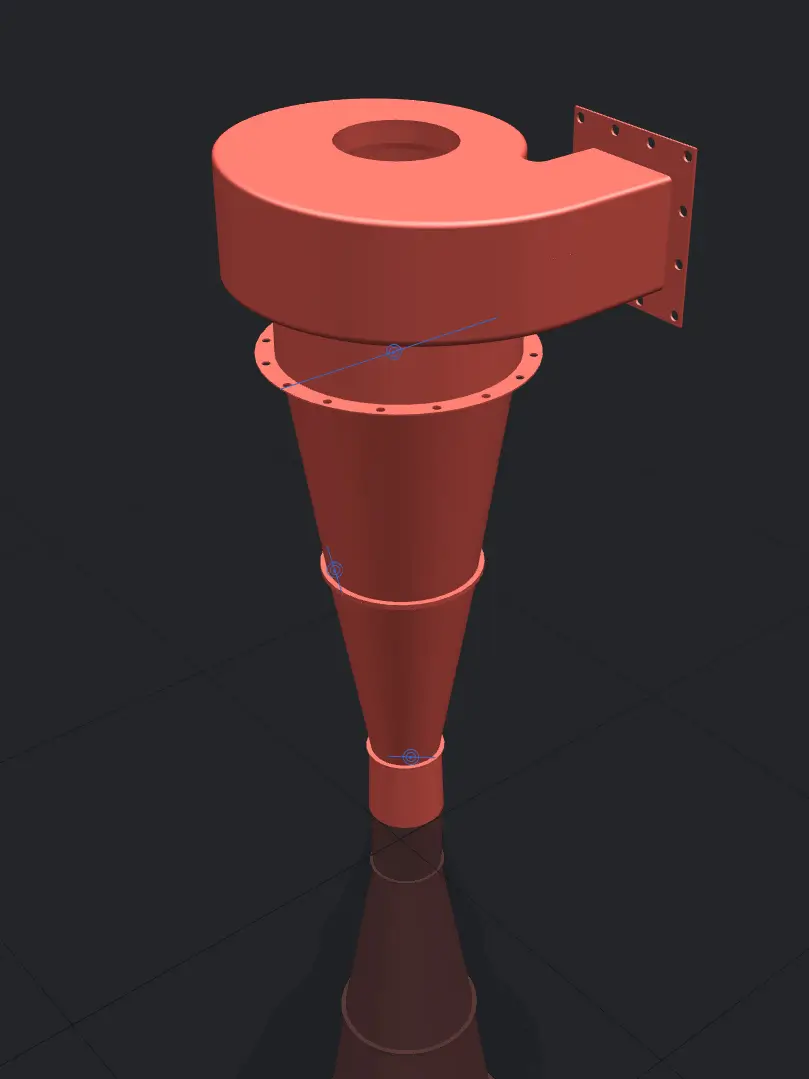
Contact DEF Rubber – Improve Your Separation Efficiency Today: Optimizing your hydrocyclone setup can lead to better recovery of valuables, higher throughput, and lower costs due to reduced downtime. DEF Rubber is ready to partner with you on this journey. Today to discuss your needs or request a quote for a hydrocyclone (or replacement parts). Our experts will ensure you get a solution that’s tailor-made for your operation – bringing together top-notch equipment and the most durable rubber wear linings in the industry. Let us help you choose and customize the perfect hydrocyclone so you can enjoy efficient, trouble-free performance for years to come.
Reach out to DEF Rubber now and let’s find the ideal hydrocyclone solution for your business!

